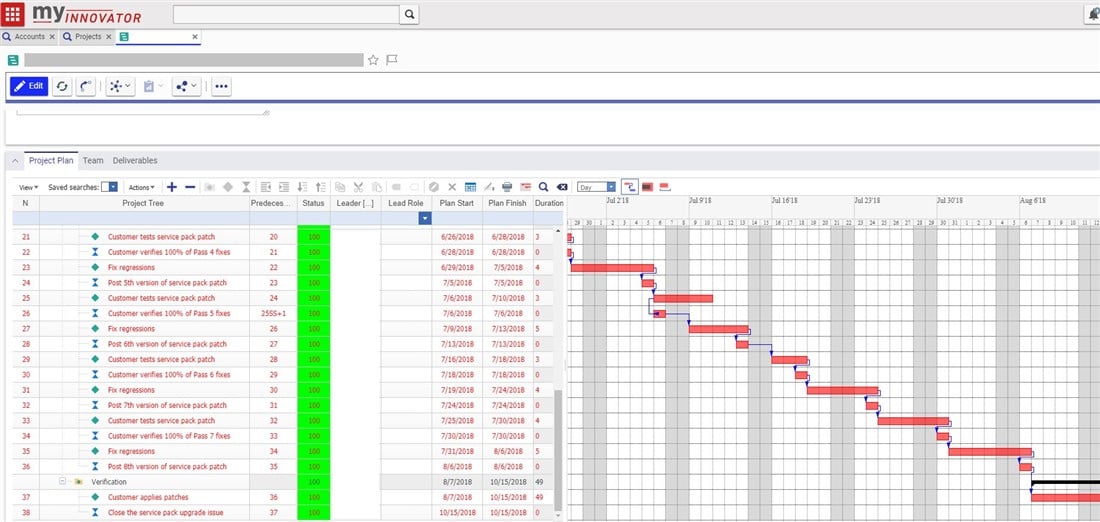We talk a lot about integrated solutions in PLM. Why? I suppose the answer depends on who you ask. I thought it might be useful to take a user story approach to shed some light on one facet of integration.
Today, I was working on creating a project plan for a new product feature. I wanted to take the PMI concept and simplify it a bit to fit what we do in Product Management. In addition to tasks, I also wanted to make some connections to the documents and issues that my project is creating or solving - all within our internal Aras Innovator instance. I realized that not all companies have integrated tools and this may be a good thing to share, so here we go...

I was thinking about the Product Managers that I know from B/E Aerospace and Zodiac Aerospace. These guys are ALWAYS on the go! There is a lot going on during the lifecycle of an aircraft seat - much more than the average airline passenger knows. A typical PM is responsible for interfacing with Sales, Marketing, Engineering, Operations, vendors, and the Customer. Keeping track of a single person's to-do list is hard enough, but when you add a complex project schedule on top of that, it can be overwhelming.
On a daily basis, a typical PM is managing schedule, tracking milestones, talking to Engineering and reviewing various technical documents like drawings, models, PDF's etc. Most companies have PDM systems, Project management software of some sort, and some even have PLM systems. But more than likely they are islands - with no integration. What does this mean...it means that the PM that is running between meetings with the test lab and Engineering leadership needs to open 2-3 different pieces of software to access the information to do his/her job. Not to mention make sure that the data all matches! Good luck, get more coffee! And this was just a "typical day."
Imagine that the PM has a PLM system with an integrated Project Management application. The PM can log in in the morning and do 50% of their work in a single application. The project schedule is contained in the same database as the parts, drawings, and BOMs. In the morning after getting the first cup of coffee they can fire up PLM and check the project schedule. And since these guys are real pros, they created links from the project plan to the parts and documents that are the output of the project tasks - i.e. deliverables. This means that when the PM is checking the status of tasks that are due today and he sees that the document that represents the output has a "Released" status applied to it - the project task can be marked as complete also. There was no calling the engineer or trying to find the information. It was all right there in the PLM system. And because it was right there the PM could open the document or 3D model to verify that it met standards or requirements.
Multiply this by hundreds of project activities that deal with creating product data that the PM needs to ensure that work is completed. Now also add to that the mountains of information that a PM collects from the customers, vendors, meetings, etc. The value of the integrated systems are pretty obvious - saving time saves money! With an integrated system they can store all of that data in PLM and link it to the appropriate task. Or just know that it is safely collected in one spot with models, drawings, BOMS, Analysis results, test reports, etc. - all equally important through the lifecycle of an aircraft seat.
Additional value comes from having project status metrics and dashboards that leverage all of that important data. Since it is all in one place - it can be evaluated and performance metrics like earned value can be created. With integration like this a PM can see nearly realtime status of a project. Program reviews become streamlined events - PowerPoints are not needed, there is a live dashboard in PLM for each project. Management is happy because all of the data is presented in a standard form and nobody was able to "game" the metrics. Integration is a useful and powerful thing!
User stories like this are prevalent across all industries. In most cases, firms have islands of software with no integration. The lucky few do have integrated solutions. For them, life is good!
Aras can help with an integrated PLM system. Our platform is built to handle the challenges of "The Business of Engineering." Starting with our Open Source offering that bundles Configuration Management and Project Management.

